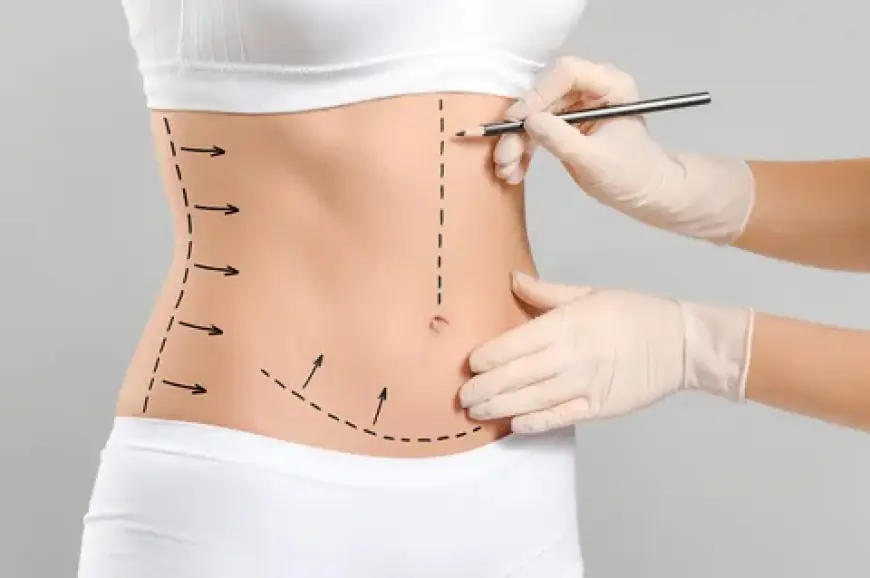Liposuction Surgery: Risks, Benefits, and Recovery Explained
Learn everything about Liposuction Surgery — a popular fat removal procedure to contour your body. Explore benefits, risks, recovery tips, and costs.
Liposuction surgery is one of the most popular cosmetic procedures worldwide. People turn to this body contouring technique to remove stubborn fat deposits that diet and exercise simply can’t eliminate. But like any surgery, it’s essential to understand the potential risks, benefits, and what recovery truly involves.
If you’re considering liposuction surgery جراحة شفط الدهون, this comprehensive guide covers everything you need to know for an informed decision.
What Is Liposuction Surgery?
Liposuction is a surgical procedure that removes unwanted fat from targeted areas using a suction technique. Common treatment areas include:
-
Abdomen
-
Hips and thighs
-
Arms
-
Back
-
Neck and chin
While not a weight-loss method, liposuction helps reshape your body for a leaner, more defined appearance.
Benefits of Liposuction Surgery
1. Targeted Fat Removal
Liposuction precisely targets fat deposits that don’t respond to exercise or diet.
2. Improved Body Contour
After healing, most patients enjoy a slimmer, more sculpted appearance.
3. Long-Lasting Results
Once fat cells are removed, they don’t return. As long as you maintain a stable weight, results can be permanent.
4. Boost in Confidence
Many patients feel more confident in their appearance after surgery, with better-fitting clothes and improved self-esteem.
5. Safe When Done by Experts
Modern liposuction techniques have made the procedure safer than ever, especially when performed by a board-certified plastic surgeon.
Risks and Side Effects of Liposuction Surgery
While generally safe, liposuction carries some risks:
1. Swelling and Bruising
Swelling and bruising are normal for 1–2 weeks after surgery.
2. Infection
Although rare, infections can occur if proper care isn’t taken.
3. Numbness
Temporary numbness in the treated areas is common, lasting a few weeks or months.
4. Fluid Accumulation (Seromas)
In some cases, pockets of fluid may form and need to be drained.
5. Contour Irregularities
Some patients experience uneven fat removal, leading to a lumpy or wavy skin texture.
6. Fat Embolism (Rare)
In very rare cases, loosened fat can enter the bloodstream, causing a serious complication.
Choosing an experienced surgeon minimizes these risks.
How the Procedure Works
-
The surgeon marks the target areas.
-
Small incisions are made.
-
A tumescent solution is injected to reduce bleeding and ease fat removal.
-
A cannula (thin tube) suctions out the fat.
-
The area is stitched or left to heal naturally.
The procedure typically lasts 1–3 hours depending on the size and number of areas treated.
Different Types of Liposuction
-
Traditional Liposuction: Manual fat suction via a cannula.
-
Laser-Assisted Liposuction (SmartLipo): Uses laser energy to liquefy fat before removal.
-
Ultrasound-Assisted Liposuction (VASER Lipo): Breaks down fat using ultrasonic energy.
-
Power-Assisted Liposuction (PAL): Uses a vibrating cannula for easier fat removal.
Each method offers benefits, depending on your goals and body type.
Recovery After Liposuction Surgery
1. Compression Garments
You’ll need to wear compression garments for several weeks to minimize swelling and help your skin adapt to its new shape.
2. Rest and Healing
-
Most patients return to light activities after 3–7 days.
-
Strenuous exercise should be avoided for at least 3–4 weeks.
3. Swelling Timeline
Swelling is most noticeable in the first few weeks. Final results may take 3–6 months to fully appear as swelling subsides.
4. Pain Management
Mild to moderate discomfort is typical and can be managed with prescribed painkillers or over-the-counter medications.
How Long Do Results Last?
Fat cells removed during liposuction are gone permanently. However:
-
If you gain weight, remaining fat cells can expand.
-
A healthy diet and regular exercise help maintain your new shape.
Many patients enjoy results for years after surgery, especially when weight remains stable.
Is Liposuction Worth It?
For people with localized fat that won’t respond to traditional weight loss methods, liposuction can be life-changing. The key benefits include:
-
More defined body shape
-
Boosted self-confidence
-
Long-term fat reduction
However, it’s important to manage expectations. Liposuction isn’t a cure for obesity or a substitute for healthy living.
How Much Does Liposuction Surgery Cost?
Costs vary based on:
-
Number of treatment areas
-
Surgeon’s expertise
-
Facility fees
In general:
-
Small areas (chin, arms): $3,000–$5,000
-
Larger areas (abdomen, thighs): $5,000–$10,000
Since liposuction is cosmetic, insurance rarely covers it.
Questions to Ask Your Surgeon
Before undergoing liposuction, ask:
-
Are you board-certified in plastic surgery?
-
What technique do you recommend for me?
-
What risks should I be aware of?
-
Can I see before-and-after photos of your previous patients?
-
What should I expect during recovery?
Conclusion: Is Liposuction Right for You?
Liposuction surgery can offer transformative results for the right candidate. If you’re close to your ideal weight but struggle with localized fat deposits, liposuction may be the answer.
Work with a reputable, board-certified plastic surgeon to minimize risks and achieve natural-looking results. With realistic expectations and proper aftercare, you can enjoy long-lasting improvements to your body shape and confidence.
What's Your Reaction?
 Like
0
Like
0
 Dislike
0
Dislike
0
 Love
0
Love
0
 Funny
0
Funny
0
 Angry
0
Angry
0
 Sad
0
Sad
0
 Wow
0
Wow
0


















































